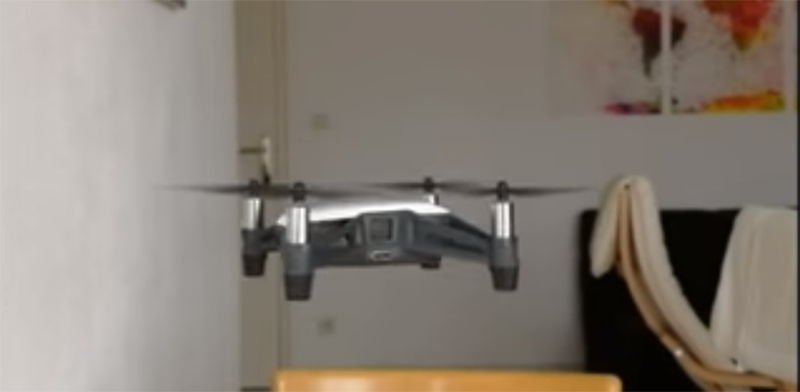In late 2013 and early 2014, in the heady days of the drone revolution, there was one killer app — the selfie drone. Selfie sticks themselves had already become a joke, but a selfie drone injected a breath of fresh air into the world of tech. Fidget spinners had yet to be invented, so this is really all we had. It wasn’t quite time for the age of the selfie drone, though, and the Lily camera drone — in spite of $40 Million in preorders — became the subject of lawsuits, and not fines from the FAA.
Technology marches ever forward, and now you can build your own selfie drone. That’s exactly what [geaxgx] did, although this build uses a an off-the-shelf drone with custom software instead of building everything from scratch.
For hardware, this is a Ryze Tello, a small, $100 quadcopter with a front-facing camera. With the right libraries, you can stream images to a computer and send flight commands back to the drone. Yes, all the processing for the selfie drone happens on a non-flying computer, because computer vision takes processing power and battery life.
The software comes from CMU’s OpenPose library, a real-time solution for detecting a body, face, or hands. With this, [geaxgx] was able to hover the drone and keep his face in the middle of the camera’s frame. While there’s no movement of the drone involved — the drone is just hovering and rotating to the left and right — it is a flying selfie stick without the stick. You can check out the video below and check out all the code on [geaxgx]’s GitHub here.
















This is a nice project but I’m afraid that could be the next step:
https://www.youtube.com/watch?v=9CO6M2HsoIA
Wow. Just……wow. Talk about a buzz kill.
I was going to comment on what a cool project this was and what a great tool for vloggers and journalists this would be, but now I have a new definition for the term……..”BUZZ KILL”.
Jeez, how do you enforce Azimov laws into such limited and rogue AIs, available with such ubiquity and economy, anonymously purchased with cryptocurrency?
Ok, taking dibs on “BUZZ KILL”. But only for anti killer bot technology. Start designing now. This needs to be a sort of “X prize” thing.
I sincerely doubt that since this projects drone requires an external computer to process the cameras output and issue commands to the drone while the fictional drones in that video aren’t so limited.
At most it might be possible to use these drones as long as the person has a rugged laptop or perhaps even a smartphone (sans bloatware) however I couldn’t see these being continually used in the above video without some form of drone/anti-drone/countermeasure arms race happening and considering just how small those drones were they can’t have much spare processing power ECCM to the sort of ECM that we’d soon see around public buildings and homes which while fixed defenses would have the advantage when it comes to computing power (to spam misleading or contradictory commands through the drone swarms network) and electrical power (with which to blast those commands out over the limited transmitting power of each drone)…..
Heck this is excellent.
Please just take my money!
Could this be used outside at a longer distance ?
Those $100 brushed motor drones are quite light, but on a calm day they can hold position. DJI have their downward optical flow sensors on these things, so it can land on your hand and do many things a full size DJI drone can. It doesn’t have a GPS radio though.
Would an RPi or similar sbc have the horsepower to run this?
I want a mobile version – then take my money…!
I should imagine that an ESP32 could do this … if it’s supported on TensorFlow Lite (near real time)
It probably takes some more hacking, but the drone actually comes with a Movidius chip, that should enable light on board computer vision.
Very very cool. I wanted to go to the next with my telo wondered if I could control it like this.